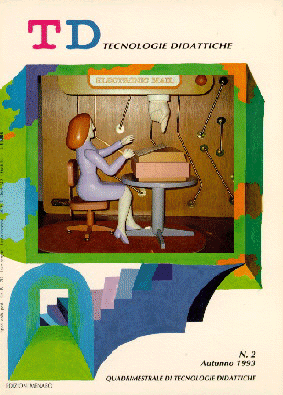The learning circles
Main Article Content
Abstract
Article Details
Authors who publish with this journal agree to the following terms:
- Authors retain copyright and grant the journal right of first publication with the work simultaneously licensed under a Creative Commons CC BY 4.0 Attribution 4.0 International License.
- Authors are able to enter into separate, additional contractual arrangements for the non-exclusive distribution of the journal's published version of the work (e.g., post it to an institutional repository or publish it in a book), with an acknowledgement of its initial publication in this journal.
- Authors are permitted and encouraged to post their work online (e.g., in institutional repositories or on their website) prior to and during the submission process, as it can lead to productive exchanges, as well as earlier and greater citation of published work (See The Effect of Open Access)
References
Cohen, M. e Riel, M. (1989) The effect of distant audiences on students’ writing. American Educational Research Journal, 26, 143 159.
Cole, M. (1981) Society, mind and development, and the zone of proximal development: where culture and cognition create each other. (CHIP 106) La Jolla, California: Center of Human Information Processing, University of California, San Diego.
Dewey, J. (1916) Democracy and education. New York: The Free Press.
Kagan, S. (1986) Cooperative learning and sociocultural factors in schooling. In Beyond language: social and cultural factors in schooling language minority students. Los Angeles: Evaluation, Dissemination and Assessment Center, California State University, Los Angeles.
Lave, J. (1988) Cognition in Practice. New York: Cambridge University Press.
Mehan, H., Moll, L. e Riel, M. M. (1985) Computers in classrooms: a quasi-experiment in guided change. (Contact No. NIE 6-83-0027). La Jolla, CA: Teacher Education Program.
Naiman, D. W. (1988) Telecomunications and an interactive approach to literacy in disabled students. Unpublished manuscript, New York University.
Newman, D. (1984) Functional learning environments (Teach. Rep. No. 25). New York: Bank Street College of Education, Center for Children and Technology.
Newman, D. (1987) Local and long distance computer networking for science classrooms. Educational Technology, 27 , 20-23.
Norman, D. (1980) Twelve issues for cognitive science. Cognitive Science, 4, 1-32.
Riel, M. M. (1985) The computer chronicles newswire: a functional learning environment for acquiring literacy skills. Journal of Educational Computing Research, 1, 317-337.
Riel, M. M. (1989) Four models of educational telecommunications: connections to the future. Education and Computing, 5, 261-274.
Rie l, M. M. and Levin, J. A. (1990) Building electronic communities: successes and failures in computer networking. Instructional Science, 19, 145-169.
Sarason, S. (1976) The cr ea tion of settings and fu ture societies. San Francisco: Jossey-Bass.
Sharan, S. and HerzLazarowiz, R. (1979) A group-investigation method of cooperative learning in the classroom. In S. Sharan, P. Hare, C. Webb and R. HerzLazarowiz (Eds.) Cooperation in Education. Provo, UT: Brigham Young University Press.
Sharan, S. (1983) Cooperative Learning in the classroom: research in desegregated schools. New Jersey: Lawrance Erlbaum Associates.
Slavin, R. (1983) Cooperative Learning. New York, Longman.
Wertsch, J. V. (1985) Vygotsky and the social formation of mind. Cambridge, MA: Harvard University Press.

